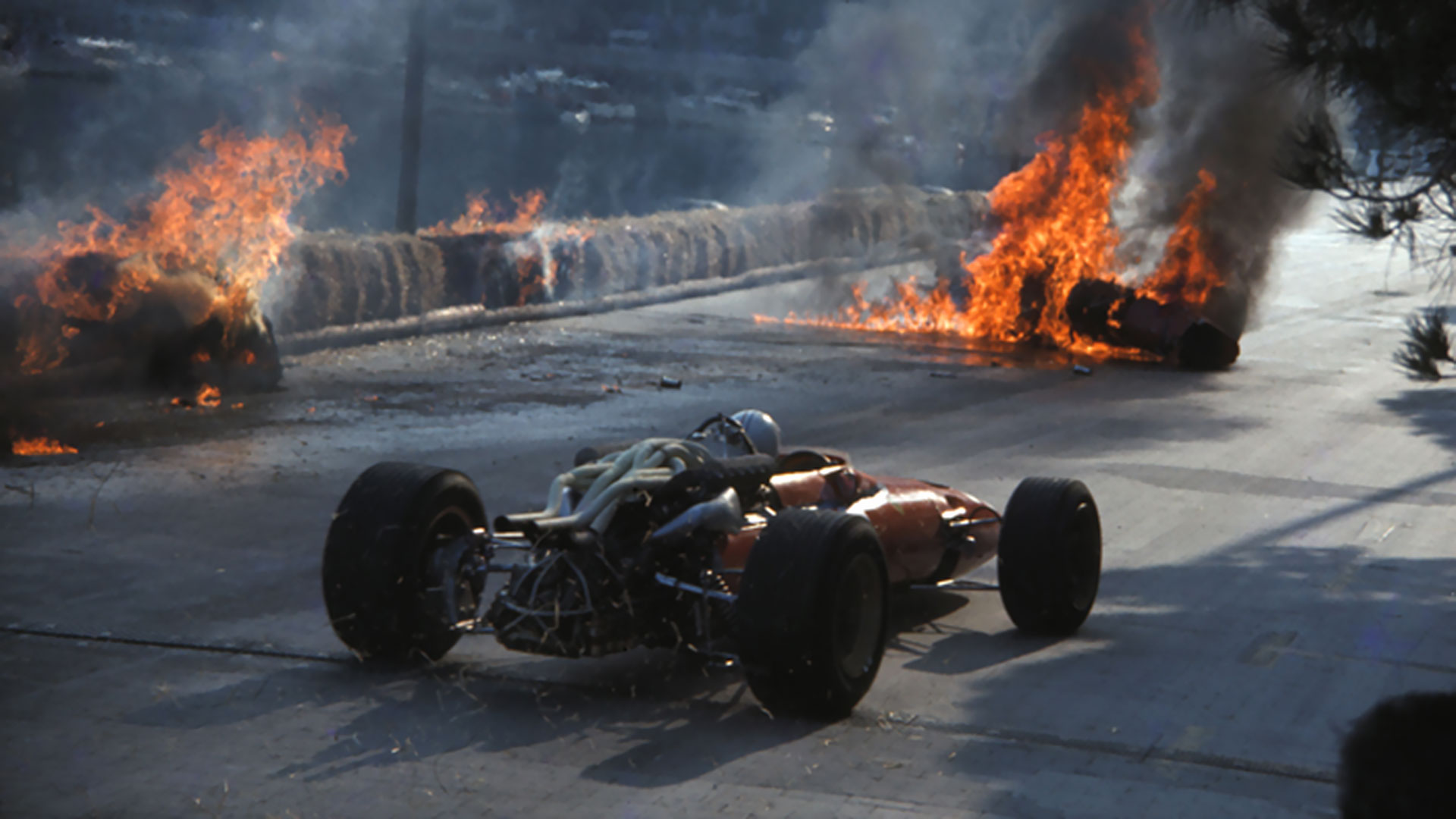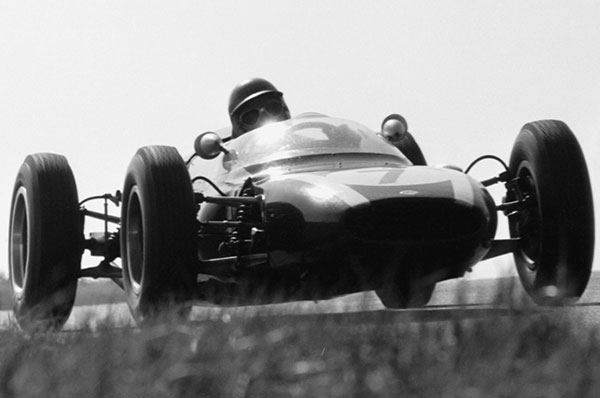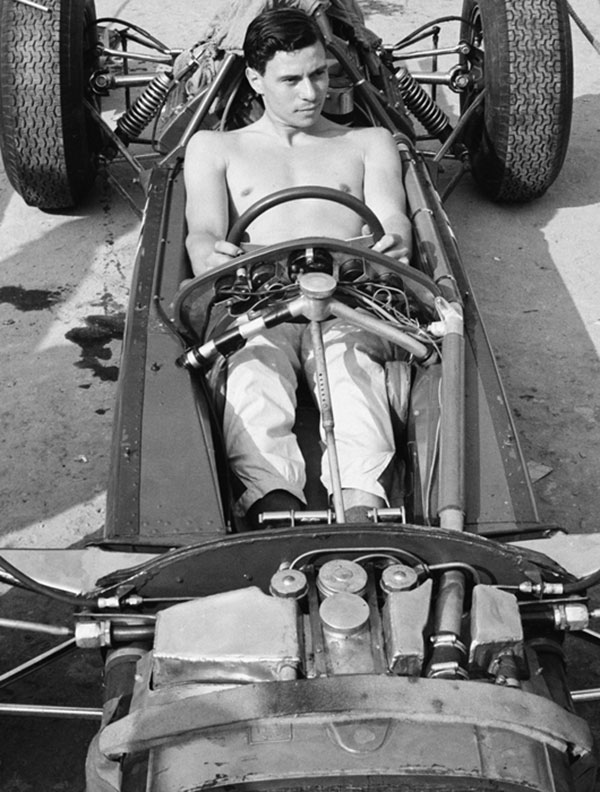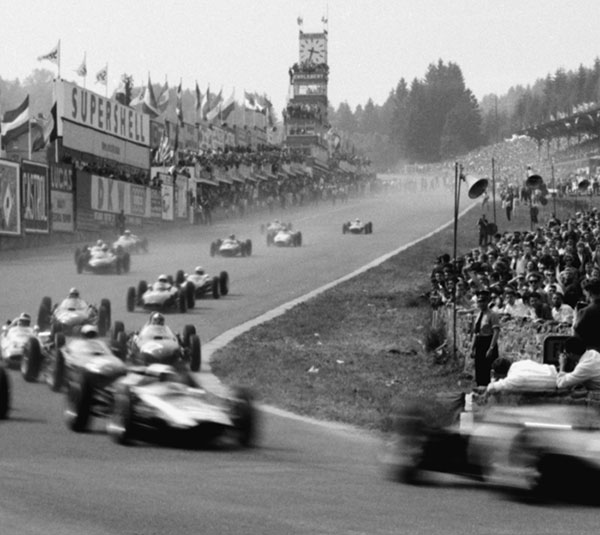

Talk about being in the right place at the right time.
Robert Daley was a young publicity director for the New York Giants football team when, in 1954, he headed to France “because Fitzgerald and Hemingway did.” He was aiming to “get published even younger and outdo both,” as he recalls so many years later. He had $500. On his first day in France, he met a woman who became his wife three months later. They began to move back and forth between Europe and the States. Daley got some work as a sports stringer for the New York Times. And it was then that he met an Olympic bobsledder at the 1956 Winter Olympics in Cortina, Italy, known as the Marquis de Portago.
Unfathomably rich and handsome beyond words, Portago was also a Ferrari racing driver. It was Daley’s fascination with Portago that opened his eyes to the glamorous and murderous world of motor racing in Europe. “He had big white teeth and a dazzling smile,” Daley wrote of Portago. “He had only to climb into a race car to draw all eyes.”

Daley had “no interest in car racing until then,” he now recalls. But he was soon following the Grand Prix scene all over Europe, with typewriter and camera, chronicling the action with remarkable prose and a delicate touch with the lens, earning $50 a story from the Times. The book he published, The Cruel Sport, first appeared in 1963, and still today belongs on every motorsport fan’s bookshelf.
The Cruel Sport brings readers behind the scenes of the Grand Prix world in the late Fifties into the early Sixties—widely regarded as motorsport’s golden era. It was a world of larger-than-life race drivers so passionate about their sport that they risked their lives in the pursuit of glory, and died with shocking regularity (the Marquis de Portago among them). “The first Grand Prix race I ever saw was Monaco in 1958,” Daley recalls. “[There were] 16 starters, 8 of whom would die at the wheel.”
Here was Frenchman Jean Behra, who wore a prosthetic ear from a motor racing accident, and would remove it when the comic effect seemed opportune. “Only those who do not move do not die,” Daley quotes Behra in The Cruel Sport. “But are they not already dead?” Behra fatally crashed at a race in Berlin in 1959, and was hurled from his Porsche; Daley was covering the race. “For an instant,” he wrote of Behra, “he could be seen against the sky with his arms outstretched like a man trying to fly.”
Here was Englishman Stirling Moss. “I love to feel a racing car around me, the way it holds me,” Daley quotes Moss in the book. “I love to make it do all that it was built to do, and then a little bit more.”

And the lanky American Dan Gurney. It was Gurney who gave Daley the title for his book. After crashing a BRM at the Dutch Grand Prix, Gurney learned that his car had killed a spectator. While watching rescue workers cover the dead man, he said, “This is a cruel sport.”
Daley’s cameras became characters in their own right. “I began to love being a photographer,” he says, looking back. “[I] bought more and better equipment. I had three Nikons and lenses from 35mm to 800mm. I began to imagine converting my feelings about motor racing into images.” [The pictures here are all from The Cruel Sport: a Ferrari at the Monaco Grand Prix in 1967 passing the fatal crash of fellow Ferrari driver Lorenzo Bandini; a Grand Prix photo used on the book’s title page; Scottish racing driver Jim Clark, who perished at Hockenheim in 1968; and an action shot from Spa-Francorchamps in Belgium.] Still, Daley admits that racing’s “most sensual and important features can’t be photographed.” They would be “noise, speed, danger.”
Ultimately, The Cruel Sport’s most compelling figure—as Daley will tell you himself—is the late Phil Hill, the Californian Ferrari pilot. Hill was, in Daley’s estimate, the most sensitive and most intelligent of the era’s Grand Prix drivers. “He was my principle window into the sport and the drivers, and I’ve been grateful to him all my life,” says Daley. Hill was a man bursting with inner conflict—the need and the talent to win, versus the need to stay alive. “I’m in the wrong business,” Daley quotes Hill in the book. “I don’t want to beat anybody, I don’t want to be a big hero.”

While racing for Ferrari, Hill saw his teammates killed one by one—notably Luigi Musso and Peter Collins, two other drivers profiled in The Cruel Sport. In 1961, Hill became the only (to this day) American-born F1 world champion. He won the title at the Italian Grand Prix, a race that saw Ferrari teammate Wolfgang von Trips killed along with numerous spectators. Daley was there, covering the race. As he later wrote in response to this horrible event:
“Motor racing is the cruelest sport. It is also the most brilliant, because it is man wrestling with his demons on the edge of the infinite…. To stop it might prevent fourteen or fifteen deaths each year—not very many in a world like ours—at a permanent cost of all that spectacle and noise, glamour and heroism, love and fear. The world would be a dimmer place without the fast cars and the men who race them. Would it be a better one?”
Daley went on to become the author of numerous critically acclaimed novels and works of nonfiction. But for some of us motor heads, his writing on racing remains his best.